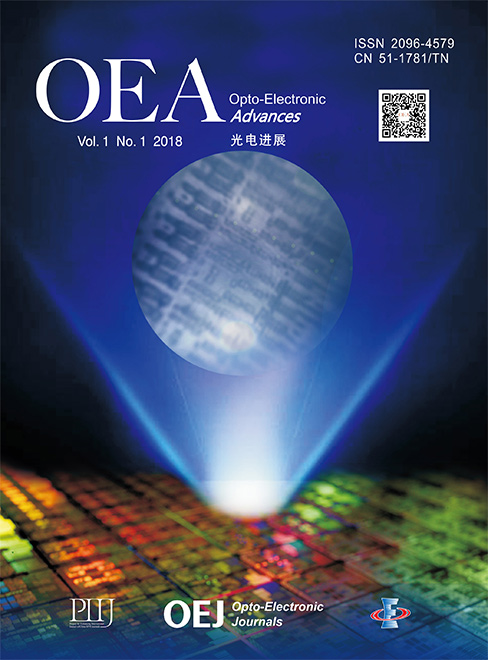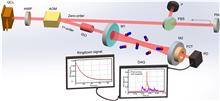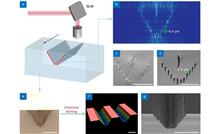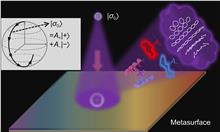 View fulltext
View fulltext
Cavity ringdown spectroscopy (CRDS), relying on measuring the decay time of photons inside a high-finesse optical cavity, offers an important analytical tool for chemistry, physics, environmental science, and biology. Through the reflection of a slight amount of phase-coherent light back to the laser source, the resonant optical feedback approach effectively couples the laser beam into the optical cavity and achieves a high signal-to-noise ratio. However, the need for active phase-locking mechanisms complicates the spectroscopic system, limiting its primarily laboratory-based use. Here, we report how passive optical feedback can be implemented in a quantum cascade laser (QCL) based CRDS system to address this issue. Without using any phase-locking loops, we reflect a moderate amount of light (–18.2 dB) to a continuous-wave QCL simply using a fixed flat mirror, narrowing the QCL linewidth from 1.2 MHz to 170 kHz and significantly increasing the laser-cavity coupling efficiency. To validate the method’s feasibility and effectiveness, we measured the absorption line (P(18e), 2207.62 cm?1) of N2O in a Fabry–Perot cavity with a high finesse of ~52000 and an inter-mirror distance of 33 cm. This agile approach paves the way for revolutionizing existing analytical tools by offering compact and high-fidelity mid-infrared CRDS systems.
Precision sculpting of glass with defined surface microstructures is vital due to the miniaturization and integration of glass-based devices, while it is still challenging as the high brittleness of glass. We here create a three-dimensional multi-focus laser for glass micro-sculpting through a beam-shaping technology based on the superposition of lens and grating phase diagrams. The multi-focus laser modification in tandem with chemical etching enables the fabrication of glass microstructures with highly adjustable profiles. Refractive-index-induced deviations are migrated via algorithm correction to ensure multi-focus positional accuracy. Energy un-uniformity due to equidistant laser spots arrangement is eliminated through their coordinate randomization following the target profiles. Finally, uniform laser spots with a proper point-to-point distance create connected cracks inside glass, enabling efficient etching with enhanced rates along the modified profile and the fabrication of surface microstructures. We demonstrate diverse groove arrays with profiles of trapezoid, semicircle, and triangle, revealing low roughness around 1.3 μm, a high depth-width ratio of 3:1, and depth up to 300 μm, which underscore broad applications such as fiber packaging.
Multiplexing multiple yet distinct functionalities in one single device is highly desired for modern integration optics, but conventional devices are usually of bulky sizes and/or low efficiencies. While recently proposed metasurfaces can be ultra-thin and highly efficient, functionalities multiplexed by metadevices so far are typically restricted to two, dictated by the number of independent polarization states of the incident light. Here, we propose a generic approach to design metadevices exhibiting wave-control functionalities far exceeding two, based on coherent wave interferences continuously tuned by varying the incident polarization. After designing a series of building-block metaatoms with optical properties experimentally characterized, we construct two metadevices based on the proposed strategy and experimentally demonstrate their polarization-tuned multifunctionalities at the wavelength of 1550 nm. Specifically, upon continuously modulating the incident polarization along different paths on the Poincare’s sphere, we show that the first device can generate two spatially non-overlapping vortex beams with strengths continuously tuned, while the second device can generate a vectorial vortex beam carrying continuously-tuned polarization distribution and/or orbital angular momentum. Our proposed strategy significantly expands the wave-control functionalities equipped with a single optical device, which may stimulate numerous applications in integration optics.
A mixture of polydimethylsiloxane (PDMS) doped with phosphor particles can be found across diverse industries having different applications. This mixture plays a particularly important role in the field of lighting, white light-emitting diodes (LED's), flexible display devices, anti-counterfeiting (AC) solutions, luminescence thermometers and many types of sensors. The field of mechanoluminescence and biomedical are booming and there is also potential for visible light communication (VLC). In this comprehensive review, the basic characteristics of PDMS and a list of selected phosphors suitable for creating a mixture of PDMS and phosphor are presented. The summary and a detailed overview of the implemented applications of this perspective mixture over the last decade is presented as well.
In a recent study, a research group from Taiyuan University of Technology published their findings in the journal Opto-Electronic Science with a title "Simultaneously realizing thermal and electromagnetic cloaking by multi-physical null medium." This work introduces a structure that can control simultaneously both electromagnetic waves and heat flow. For the first time, a single structure capable of cloaking both electromagnetic waves and heat flow was experimentally demonstrated. This research offers new solutions for the simultaneous control of electromagnetic waves and heat flow, and advances the hybrid design of electromagnetic compatibility and thermal management, which may have important potentials in e.g. medical applications.













